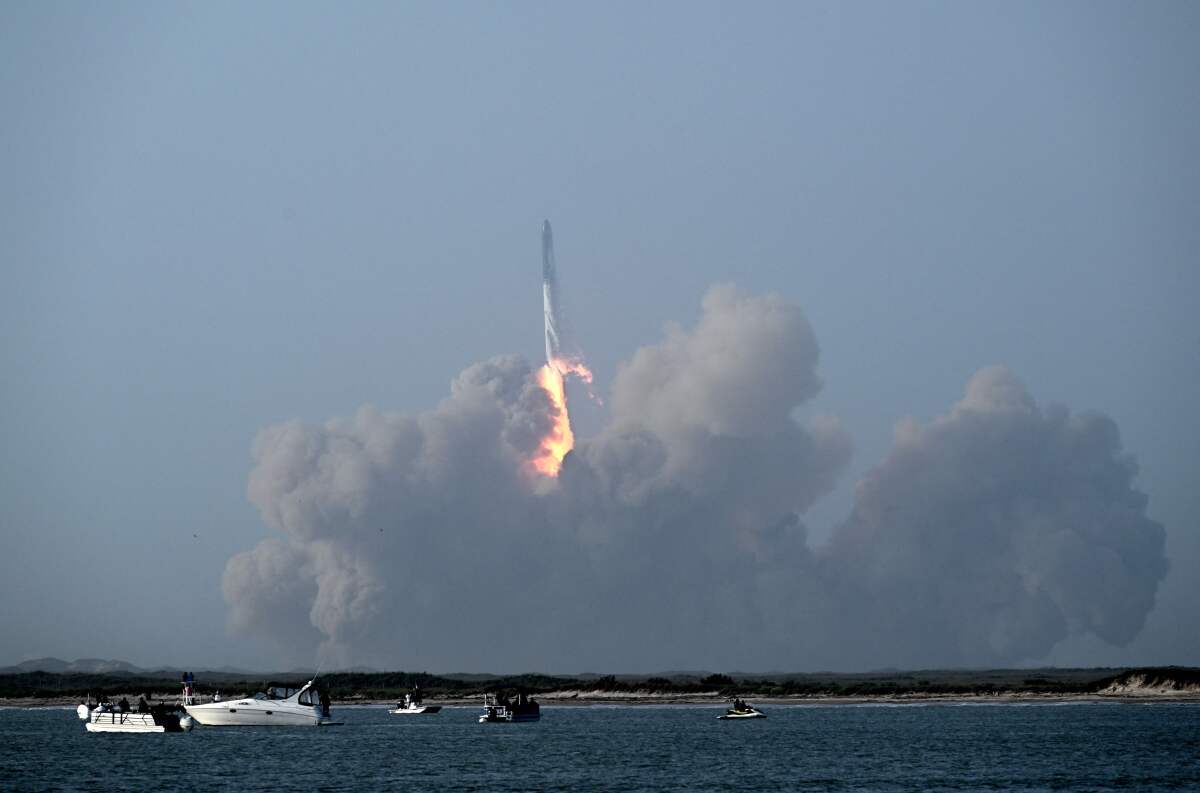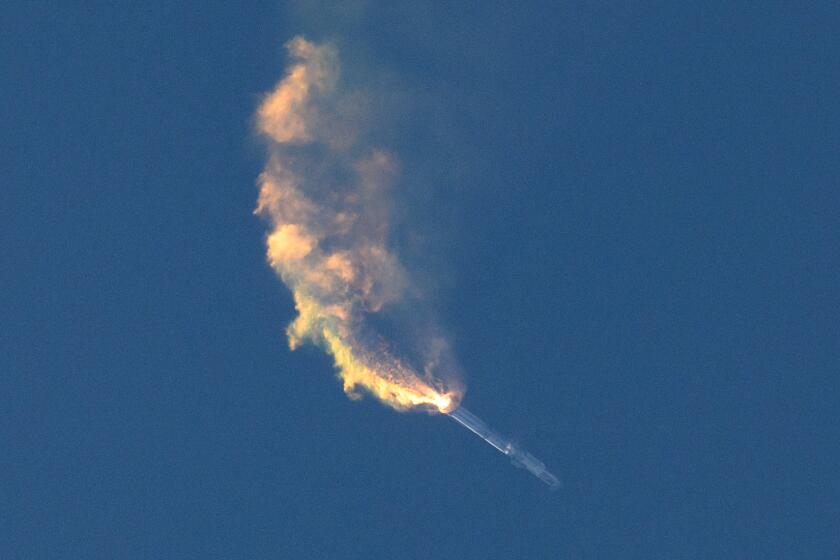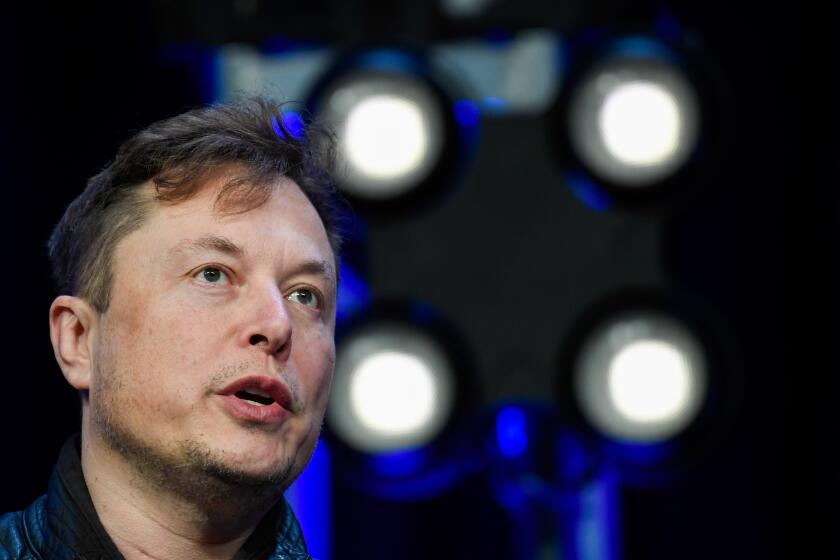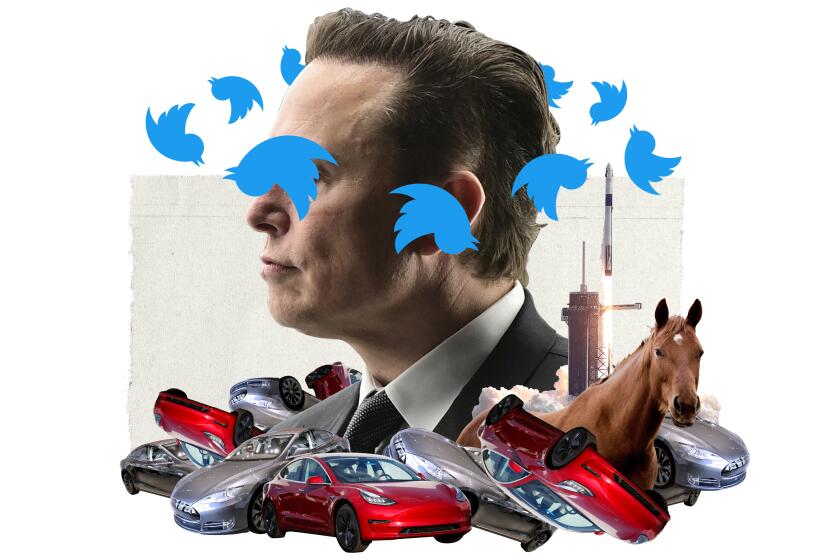SpaceX ordered by FAA to make fixes after Starship blowup that rained debris for miles

- Share via
Elon Musk’s Space Exploration Technologies Corp. must take “corrective actions” to prevent a recurrence of mishaps during an April test of the Hawthorne company’s Starship rocket before the Federal Aviation Administration will grant it another launch permit.
The FAA blamed “multiple root causes” of the explosion during a Starship test launch and said the company needs to, among other things, redesign its hardware to prevent leaks and fires. It cited a total of 63 actions in need of remedy.
“SpaceX must implement all corrective actions that impact public safety and apply for and receive a license modification from the FAA that addresses all safety, environmental and other applicable regulatory requirements prior to the next Starship launch,” the FAA said in an emailed statement Friday.
The fallout from Starship’s launch has proved extensive.
Officials with the U.S. Fish and Wildlife Service visited the launch site and privately expressed disbelief at the level of damage. SpaceX’s pad site “was totally destroyed and will likely force them to re-design the whole thing,” Chris Perez, a biologist with the agency, wrote in an email.
SpaceX’s launch of its massive Starship rocket blasted concrete up to 6.5 miles away and resulted in more than 300 acres of debris, according to the U.S. Fish and Wildlife Service.
The agency determined that concrete debris was hurled as far as 6.5 miles from the site and started a small fire.
Environmental groups sued the FAA in May, saying the agency hastily approved SpaceX’s Starbase launch facility. The lawsuit contends that the FAA didn’t properly assess environmental and community effects of SpaceX’s launch site near Boca Chica, Texas, and that mitigation measures weren’t sufficient to protect nearby wildlife. The FAA has said it doesn’t comment on ongoing litigation.
In a post on its website, SpaceX said testing development hardware in a flight environment is what enables the company to quickly learn and execute design changes and upgrades to improve its probability of future success.
“We learned a tremendous amount about the vehicle and ground systems during Starship’s first flight test,” SpaceX said.
Closing the mishap investigation does not mean SpaceX can immediately resume Starship launches at the Boca Chica site, the FAA said.
Scientists came to see Twitter as an indispensable tool for communicating with each other and the public. As X, it’s turned into a source of scientific misinformation and lies.
The FAA oversaw a mishap investigation after it grounded the rocket in the wake of the company’s first test flight April 20. During that flight, Starship successfully took off from its Texas launchpad but suffered multiple engine failures as it ascended into the sky.
The two-stage rocket then failed to separate as planned and started spinning out of control, prompting SpaceX to intentionally blow up the vehicle. The launch damaged SpaceX’s launchpad and spread debris and pulverized concrete across hundreds of acres of terrain.
In a letter to SpaceX sent Friday, the FAA cited “structural failure of the launch pad deck foundation.” Once the rocket deviated from its planned trajectory, the FAA cited an unexpected delay in the self-destruct command from SpaceX’s autonomous flight-safety system.
SpaceX said in its update that it has since upgraded that system, which is used to blow up the vehicle in case of a major malfunction. During the April test flight, SpaceX’s flight termination system took nearly a minute to blow up the vehicle, much longer than expected, according to Musk.
Elon Musk’s track record as a boss is an endless scroll of impulse firings, retribution, tone-deafness on race — and the impregnation of a subordinate.
The FAA said it has been provided with sufficient information and accepts the root causes and corrective actions described in SpaceX’s mishap report. However, the closure of its mishap investigation does not predetermine the results of ongoing or future environmental reviews, the FAA said.
SpaceX has been making a number of upgrades since the April 20 launch, including staging multiple tests of a new water deluge system designed to dampen and redirect the intense heat and forces created by Starship’s engines at liftoff.
SpaceX says it has implemented mitigation measures to prevent propellant leaks and other issues. In its update, the company noted that leaking propellant from the Super Heavy booster caused fires on the vehicle and ultimately severed the connection with Starship’s main flight computer.
Corrective actions prescribed by the FAA include redesigns of vehicle hardware to prevent leaks and fires, redesign of the launch pad, additional reviews in the design process, analysis and testing of safety critical systems and components including its Autonomous Flight Safety System.
Specifics of how the rocket failed and the actions the company must take weren’t released. It’s also unclear how much the corrective actions will cost SpaceX. The FAA said the mishap report contained information it’s prohibited by law from releasing.
More to Read
Inside the business of entertainment
The Wide Shot brings you news, analysis and insights on everything from streaming wars to production — and what it all means for the future.
You may occasionally receive promotional content from the Los Angeles Times.













